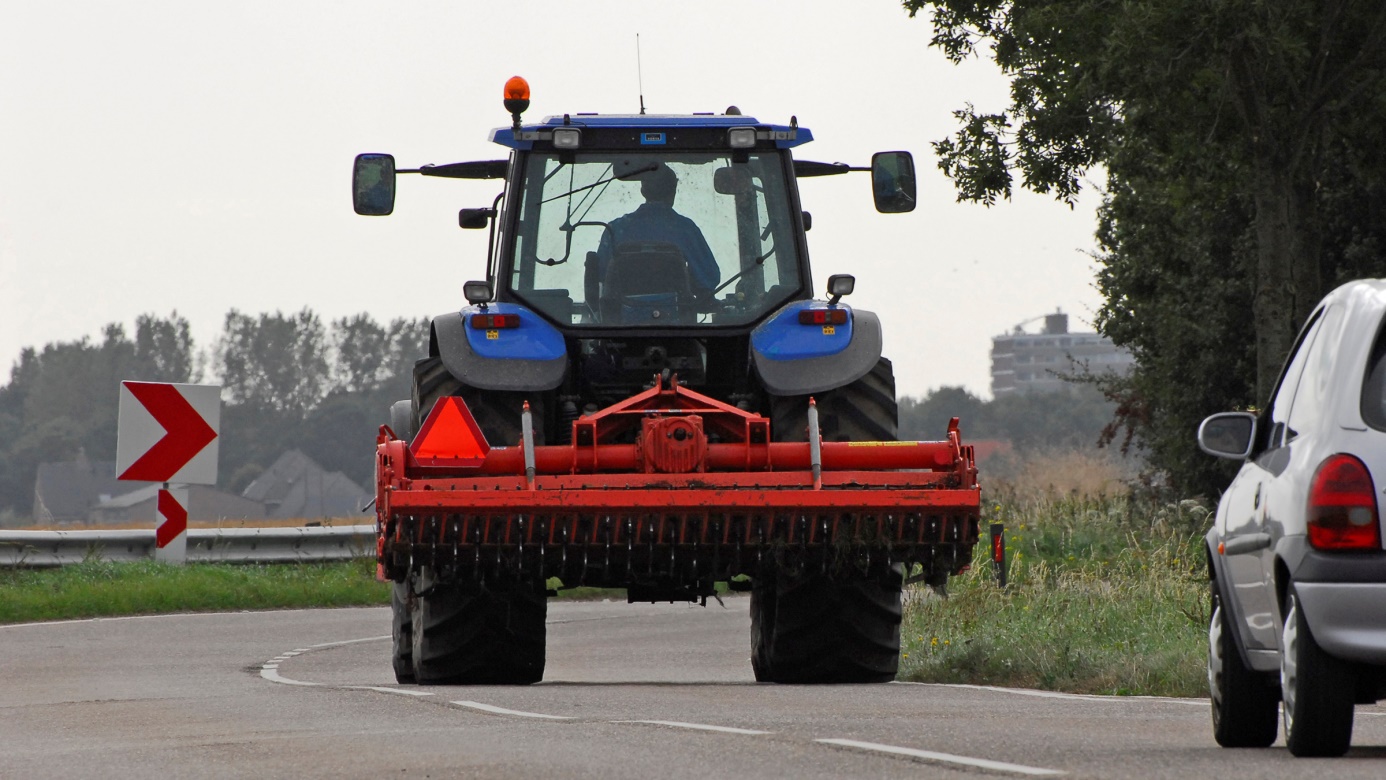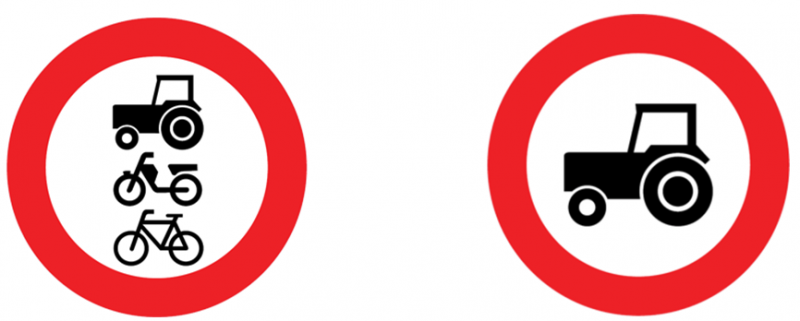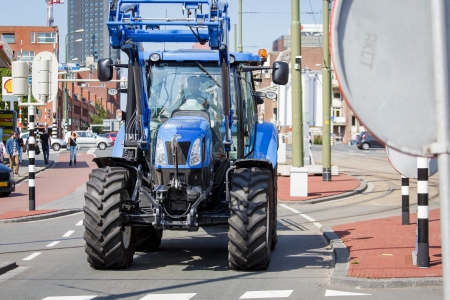[1]. CUMELA (2009). Landbouwtrekkers en werkmaterieel op weg; De positie van landbouw- of bosbouwtrekkers en motorrijtuigen met beperkte snelheid op de openbare weg. VB-SE20081149. CUMELA Nederland, Nijkerk.
[2]. OvV (2010). Verkeersongevallen met (land)bouwvoertuigen; Themaonderzoek. Projectnummer T2009WV0717-01. Onderzoeksraad voor Veiligheid OvV, ’s-Gravenhage.
[3]. CROW (2017). Kennisproduct Landbouwverkeer. Geraadpleegd 30 april 2017 op www.crow.nl. CROW kenniscentrum voor verkeer, vervoer en infrastructuur, Ede.
[4]. Rienks, W.A., Galama, P., Hermans, C.M.L. & Jaarsma, C.F. (2009). Opschaling van melkveehouderij heeft ruimtelijke effecten: kan extra belasting van plattelandswegen worden ondervangen? In: Spil 257-260, nr. 2/3, p. 31-35.
[5]. Jaarsma, C.F. (2016). Verkeersveiligheid landbouwvoertuigen 1987–2015; Een analyse, met de nadruk op ontwikkelingen in de laatste zeven jaar. Nota vakgroep Ruimtelijke Planvorming. Nummer 117. Leerstoelgroep Landgebruiksplanning, Wageningen University & Research.
[6]. SWOV (2016). Data sources; Comprehensive overview. SWOV, The Hague.
[7]. Hegeman, G. & Dijkstra, H. (2012). Hoe hinderlijk is hinderlijk; Friese meting van hinder door landbouwverkeer resulteert in verfijnde oplossingen. In: Verkeerskunde, vol. 63, nr. 2, p. 38-40.
[8]. Coffeng, R.F., Scheper, W.E., Aardoom, N. & Jaarsma, C.F. (2006). Effecten verhoging maximumsnelheid land- en bosbouwtrekkers. Directoraat-Generaal Rijkswaterstaat, Adviesdienst Verkeer en Vervoer AVV, Rotterdam.
[9]. Tweede Kamer der Staten-Generaal (2016). Motie van het lid Visser over snelheidsverhoging voor trekkers. Motie 34397-23. Tweede Kamer der Staten-Generaal, Vergaderjaar 2016–2017, Den Haag.
[10]. Michels, T. & Meijer, E. (1989). Scheiding van verkeerssoorten in Flevoland: criteria en prioriteitsstelling voor scheiding van langzame en snelle motorvoertuigen op secundaire wegen. Instituut voor Cultuurtechniek en Waterhuishouding ICW, Wageningen.
[11]. Weijermars, W.A.M., Dijkstra, A., Doumen, M.J.A., Stipdonk, H.L., et al. (2013). Duurzaam Veilig, ook voor ernstig verkeersgewonden. R-2013-4. SWOV, Leidschendam.
[12]. Jaarsma, C.F., Rienks, W. & Hermans, T. (2010). De tractor en de openbare weg; Precieze achtergrondinformatie en handvatten op maat voor de tractorproblematiek. In: Verkeerskunde, vol. 61, nr. 6, p. 38-43.
[13]. Tweede Kamer der Staten-Generaal (2014). T-rijbewijs. Handelingen Tweede Kamer, Vergaderjaar 2013-2014, nr. 74, item 7, Tweede Kamer der Staten-Generaal, Den Haag.
[14]. Minister van Infrastructuur en Milieu (2015). Regeling van de Minister van Infrastructuur en Milieu, van 20 april 2015, nr. IENM/BSK-2014/219006, houdende vaststelling van de eisen voor het praktijkexamen voor de rijbewijscategorie T (Regeling eisen praktijkexamen rijbewijscategorie T). In: Staatscourant Nr. 9901 - 29 april 2015.
[15]. Tweede Kamer der Staten-Generaal (2013). Maatregelen verkeersveiligheid. Kamerstuk 29398 nr. 356. Vergaderjaar 2012-2013.
[16]. Schultz van Haegen, M.H. (2017). APK-plicht voor snelle tractoren. Kamerbrief 1 juni 2017, IENM/BSK-2017/125995. Ministerie van Infrastructuur en Milieu, Den Haag.
[17]. Behl, T., Verlage, A., Gwehenberger, J., Helmsath, D., et al. (2011). Personenschadenunfälle mit landwirtschaftlichen Zugmaschinen. Gesamtverband der Deutschen Versicherungswirtschaft e.V. (GDV), Unfallforschung der Versicherer (UDV), Berlin.
[18]. Hospers, A., Lammeren, R. van, Kuiper, P.P. & Louwsma, M. (2015). Verrijkt netwerkmodel berekent huis-veldritten. Internet-artikel 29 mei 2015 met samenvatting in: Verkeerskunde vol. 66, nr. 3/2015.
[19]. Wegman, F. & Aarts, L. (2006). Advancing Sustainable Safety; National Road Safety Outlook for 2005-2020. SWOV, Leidschendam.
[20]. Blommaert, W. (2010). Landbouwverkeer een vergeten groep! Of toch niet? Logistieke landbouwroutes is het antwoord. In: Verkeersslachtoffers: minder is mogelijk! Hoe pakt u dat aan? In: Nationaal Verkeersveiligheidscongres NVVC 2010, 22 april 2010 , Rotterdam.
[21]. Louwerse, K. (2011). Handleiding kwaliteitsnet landbouwverkeer. Kennisplatform Verkeer en Vervoer KpVV, Utrecht.
[22]. CROW (2006). Handreiking landbouwverkeer; Wegen met gemengd verkeer buiten de bebouwde kom. Publicatie 240. CROW kenniscentrum voor verkeer, vervoer en infrastructuur, Ede.
[23]. Jaarsma, C.F., Beunen, R., Van Ark, R.G.A. & Botma, H. (2003). Passeerplaatsen voor landbouwverkeer: sober, maar Duurzaam Veilig alternatief voor parallelwegen. In: Verkeerskunde, vol. 54, nr. 7, p. 24-29.
[24]. Ammerlaan, D.J.A.W. (2012). Effectiveness agricultural vehicle interventions on rural distributor roads; Analysis of the impact of infrastructural interventions on rural distributor roads, to reduce negative effects of agricultural vehicles on traffic safety, traffic flow and environment. Master Thesis. Delft University of Technology, Faculty of Civil Engineering and Geosciences.
[25]. CROW (2002). Handboek wegontwerp wegen buiten de bebouwde kom; Gebiedsontsluitingswegen. Publicatie 164c. CROW kenniscentrum voor verkeer, vervoer en infrastructuur, Ede.

 Table 1. Development of the number of registered road deaths and serious road injuries (MAIS 2+)
Table 1. Development of the number of registered road deaths and serious road injuries (MAIS 2+) Table 2. Registered numbers of road deaths and serious road injuries (MAIS 2+) in the periods 2005-2009 and 2010-2015
Table 2. Registered numbers of road deaths and serious road injuries (MAIS 2+) in the periods 2005-2009 and 2010-2015 Figure 1. Age distribution of a total of 61 drivers of agricultural vehicles involved in fatal crashes, registered in the period 2010-2015. In this period no women were registered as driver of an agricultural vehicle involved in a fatal crash (source: IenM).
Figure 1. Age distribution of a total of 61 drivers of agricultural vehicles involved in fatal crashes, registered in the period 2010-2015. In this period no women were registered as driver of an agricultural vehicle involved in a fatal crash (source: IenM). Figure 2. Speed limit at the location of a total of 65 fatal crashes in the period 2010-2015, as registered by the police (source: IenM).
Figure 2. Speed limit at the location of a total of 65 fatal crashes in the period 2010-2015, as registered by the police (source: IenM). Figure 3. Tractor with tool (harrow), flashing light and at the rear left the retro-reflecting triangle (photo: H. Dijkema).
Figure 3. Tractor with tool (harrow), flashing light and at the rear left the retro-reflecting triangle (photo: H. Dijkema).
 Figure 4. Example of a tractor bumper (photo: SWOV).
Figure 4. Example of a tractor bumper (photo: SWOV).